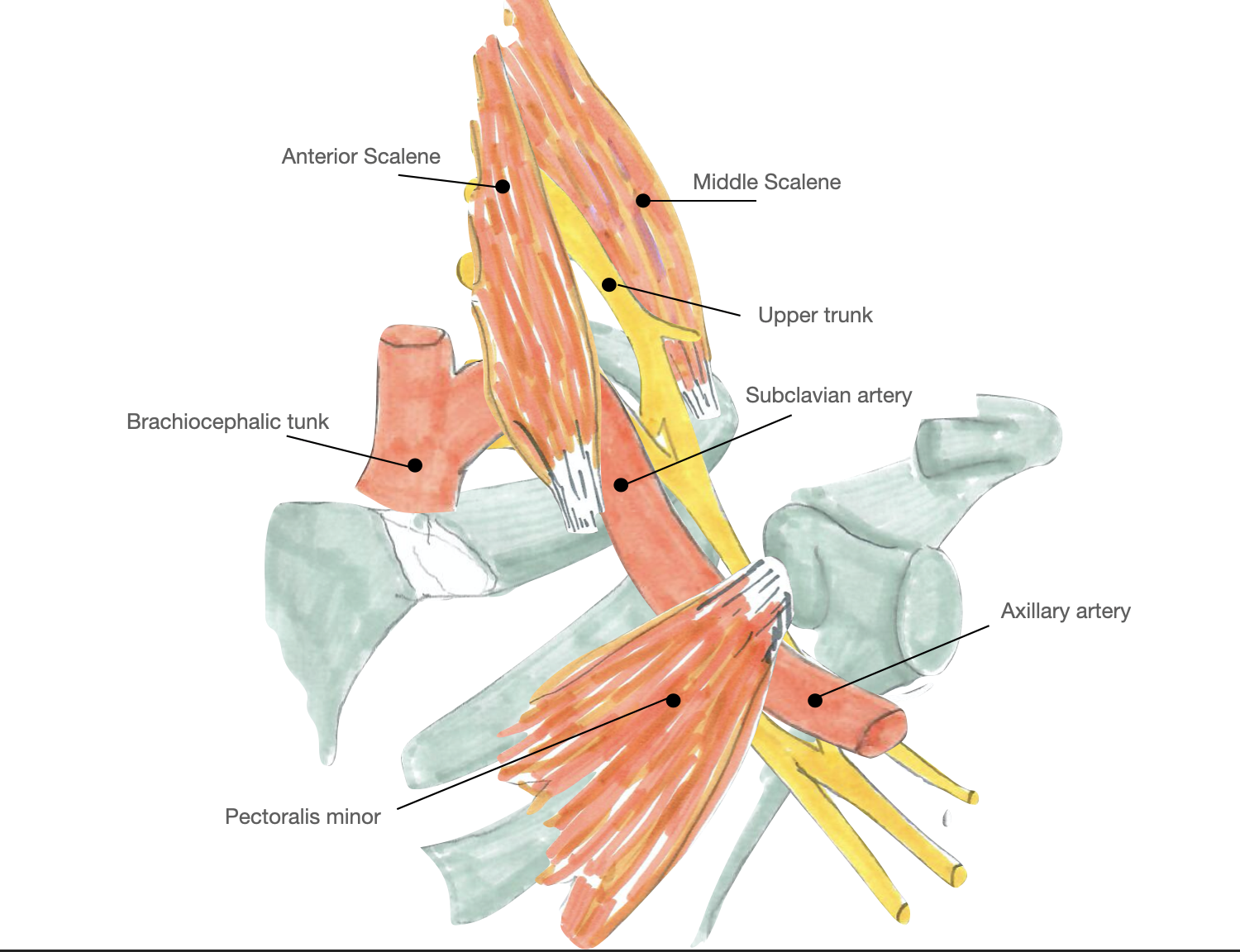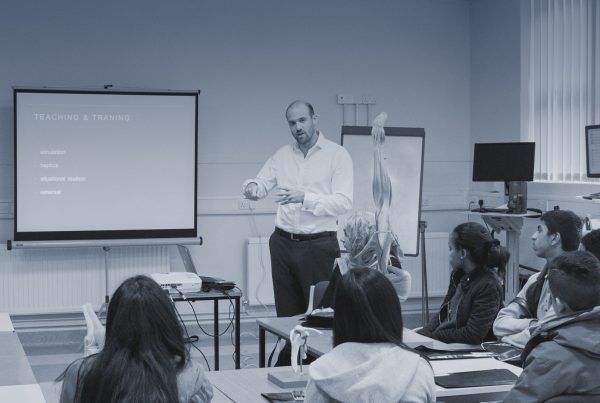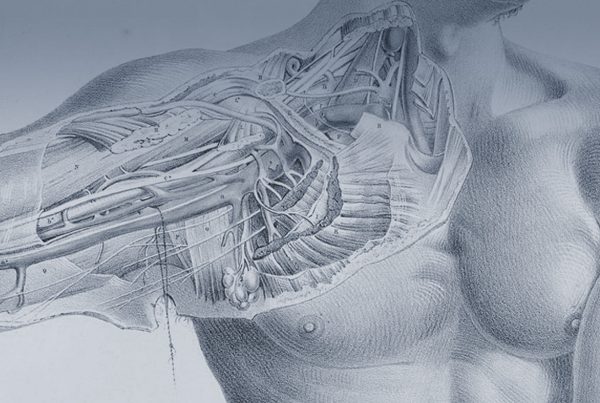Thoracic Outlet Syndrome
The thoracic outlet is a region of anatomy just like the ‘carpal tunnel’ or ‘abdomen’:
It is between the neck and the arm and lies between the collar bone and the first rib. Many important structures runs though this area of anatomy:
- The big artery and vein (subclavian) taking blood to and from the arm,
- the nerves that control the function of the arm; ‘the wonderful brachial plexus’.
The term Thoracic outlet ‘syndrome’ means meany things to many different people. In short it is a problem of the bits and pieces in the ‘thoracic outlet area’ due to the anatomy of the area commonly causing squash or stretch or both. It can involve pain or numbness or muscle spasms or weakness or colour changes etc etc.
There is a version where the biggest problem of squash or stretch affects the blood vessels in the thoracic outlet where there can be blood clots or a blockage of blood returning to the arm or a reduced food flow of oxygenated blood into the arm. This is called Vascular TOS.
The other type (and they can both co-exist) is where the biggest problem from the squash or stretch is to the nerves of the arm, this can cause pain and numbness or weakness, or tingling, or coldness, or strange feelings or all of these or some of these. This is call Neurogenic TOS.
The problems can be split in to those problems that come about because of injury (called acquired) and those were the anatomy was wrong from birth or became wrong with normal growth (these are called congenital). Again it is common for there to be both causes; that an injury makes things worse as due to the way you were made the anatomy is a bit different (a congenital predisposition to an acquired trauma).
So as you might guess this area of medicine is rather complicated. We have a few tests which help us see if there is a problem in the thoracic outlet but in the main it is just listening to what symptoms there are and how they came on which gives the diagnosis and often there are signs to find when examining a patient.
One of the tests we can do is get a picture (called a scan) and this we can do with a magnet scanner (MRI) to look at the nerves (although it is not so good and quite blurry) and Xray or 3-d Xray (CT) or looking and the bones, or an injection scan (angiography/venography) of the rates or veins. All of these provide a piece of the puzzle but hardly ever the whole picture.
So the question for most patients are:
I have symptoms and want to know firstly are my symptoms caused by TOS ?(a squash or a stretch of the nerves or vessels in the thoracic outlet) a
and then secondly are my symptoms something that can be improved by surgery?
Both very good questions!
In short in some cases it is easy to answer yes to both of those questions; yes your symptoms are caused by a TOS and yes surgery will help. But those cases are few and far between. For most people symptoms are not totally classic (easily recognisable) and so it is hard to say it is definitely TOS. If we don’t know the diagnosis (reason for the symptoms) then we can’t say what will happen if we do nothing (natural history) and what effect treatment will have.
In almost all patients with symptoms that might or are probably TOS the first step is treatment with Physiotherapy: For most of us our posture is poor and the space between the first ring and the clavicle can be incareased by stretghtning our muscles in the back chest and neck and getting better habits of posture. This takes time, but (unlike surgery) has no risk. The more time and effort you give it the better it is, it is not relying on a doctor to help you but taking that responsibility on yourself. Many people can be improved to such a point where their symptoms no longer bother them. (Particularly teenage patents who have had significant growth spurts chasing the onset of their TOS symptoms.)
Pain killers, particular medications for nerve pain (anti-neuropathic medications) can be a great help also, improving sleep, allowing you to get back to many tasks and breaking the cycle of pain meaning you can’t do your exercises which leads to more pain and less exercise.
Some people have persistent symptoms however, for these surgery has to be discussed. This section here (ANATOMY) leads to a discussion of what parts of the anatomy can be a problem in TOS and explains the operation – some people would rather not read about these things so it is on a different page for those who do want to understand what Mr Quick does in surgery.
Surgery in many cases is treated as a test to see if the problem is at the thoracic outlet:
There can be no guarantee that an operation will definitely improve the symptoms as it is not known for certain that problem is caused by a problems there. However in may of these cases relief is found through an operation. Thus proving that the problem was TOS and improving it all in one go.
Mr Quick undertakes operations in the thoracic outlet as a standard part of his practice but for many surgeons this is an area that they are worried about. It is a complex area of anatomy at the base of the neck with lots of important working parts. There are some risks you must be aware of:



